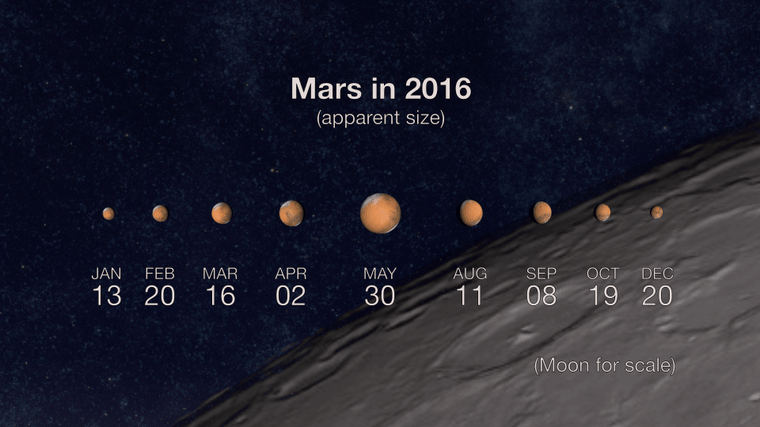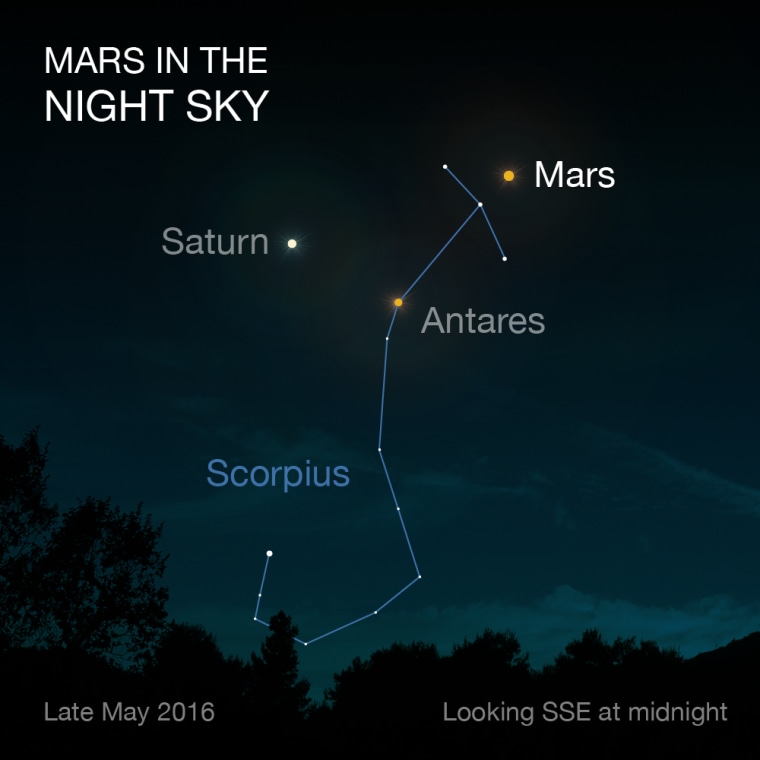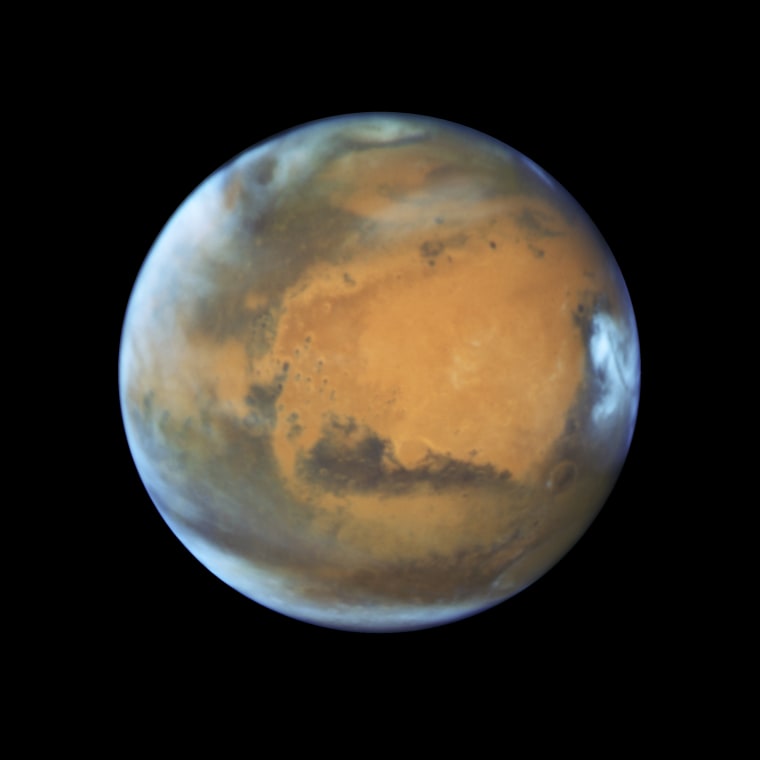Tonight Mars makes its closest approach to Earth, or rather Earth makes its closest approach to Mars.
Technically Earth is on the inside lane of the Solar System racetrack so we orbit the Sun faster than Mars does - over 50% faster. As a result, Earth and Mars come closest in their respective orbits roughly once every two years (26 months to be exact). However, give their slightly different elliptical orbits and inclinations, not every close approach is equal. Distances between the two planets at this time can vary by over 30 million miles. You may recall the Mars hype from 2003 when the planet was the closest its been in the last 60,000 years. This won't be that close, but it is most definitely still worth checking out.

Tonight Earth will come within 46.8 million miles of the red planet which means if the skies are clear where you are, you are in for a treat! Mars will be at it's highest point in the sky at roughly 35 degrees around midnight in the southern sky. As a bonus, you'll get a glimpse of Saturn just off to the left.

What I love most about seeing Mars is that you can really see how red it is (even from my apartment in New York City). If you have a pair of binoculars or access to telescope, you'll even be able to distinguish some of the more prominent surface features, at the very least its polar caps. Should the skies not cooperate where you are, Mars will be hanging around for the rest of the summer. And it'll only be 26 more months till it happens again.

Here's some more geek from the week:
- The best new species discovered over the last year include skeletal sea dragons and giant carnivorous planets.
- Evidence of a Neanderthal cave in France is older than any cave painting ever... by a lot.
- The Chinese may be the true hipsters of the world based on new evidence of a microbrewery from 5000 B.C.
- How to use Snapchat while ascending Mount Everest.
- People like to compare brains to computers, but that analogy is pretty far off.
- Model Karlie Kloss puts her money where her mouth by creating a scholarship program for girls interested in coding.
- New approach to studying the deep ocean: use satellites to detect gravity changes based on deep ocean currents.
- Twenty ways outer space can kill you. [VIDEO]
- Japanese start-up company wants to create meteor showers on demand.
- Experience Pluto in virtual reality with this stunning interactive via the New York Times.
- If you live in NYC, this map lets you identify trees by location.
- The weak point of NASA's Curiosity rover on Mars, isn't batteries, it's wheels.
Keep on geeking!
@Summer_Ash, In-house Astrophysicist
